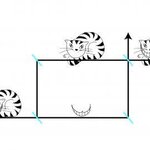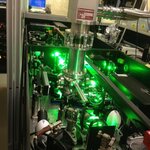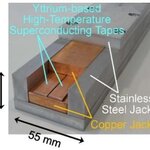Physics

This morning at the ICNFP 2014 conference in Kolympari (Crete) the floor was taken by Abdelhak Djouadi, who gave a very nice overview of the theoretical implications of the Higgs boson discovery, especially exploring the status of Supersymmetry models.
Djouadi explained how even if the average mass of sparticles is being pushed up in surviving models of Supersymmetry -both because of the negative result of direct searches and because of the effect of hardwiring in the theoretical models the knowledge of a "heavy" lightest scalar particle, which sits at 125 GeV- there is reason to be…

One of the baffling electronic properties of the iron-based high-temperature superconductor barium iron nickel arsenide is that, at sufficiently low temperatures, it becomes a better conductor of electricity in some directions than in others.
The odd behavior, which has been documented in a number of materials, occurs at temperatures slightly higher than those needed to bring about magnetism; magnetism is believed to be essential for the origin of high-temperature superconductivity. A new study in Science Express offers the first evidence that the directionally dependent behavior arises from…

Yesterday I gave a lecture at the 3rd International Conference on New Frontiers in Physics, which is going on in kolympari (Crete). I spoke critically about the five-sigma criterion that is nowadays the accepted standard in particle physics and astrophysics for discovery claims.
My slides, as usual, are quite heavily written, which is a nuisance if you are sitting at the conference trying to follow my speech, but it becomes an asset if you are reading them by yourself post-mortem. You can find them here (pdf) and here (ppt) .
(Below is the cover of my lecture slides)
Here I cannot go…
Schrödinger's cat is one of the famous examples of the weirdness of quantum mechanics
The thought puzzle is that you put a cat inside a box and make its life dependent on a random event, when does the cat die? When the random event occurs, or when you open the box?
Obviously when the event occurs, right? Not in quantum mechanics. Someone has to observe the result before it has actually happened. Until then, paradoxically, the cat is both dead and alive at the same time. The Schrödinger's cat paradox is a critical issue in quantum computers, where the input is an entanglement of…

In Lewis Caroll's novel "Alice in Wonderland", the Cheshire Cat could disappear but its grin remained. Why? Who knows? Like dogs named Checkers and Esther Williams swimming pools, things don't always make sense. Scientifically, that cat was an object separated from its properties - it was a quantum cat.
In quantum physics, particles can be in different physical states at the same time. If, for example, a beam of neutrons is divided into two beams using a silicon crystal, it can be shown that the individual neutrons do not have to decide which of the two possible paths they choose.…

If someone can use Kickstarter to raise $50,000 for making potato salad, perhaps, I can raise at least $2500 to pay publication fees on three papers. It is a little known fact that formally publishing an article in a scientific journal cost money. This money is needed by open access publishers because they do not charge a subscription fee. However, even traditional subscription supported journals require hefty publication fees for their services. It will be interesting to see how this plays out. I doubt boring old physics will go viral, but hopefully…

This is just a short update on the saga of the anomalous excess of W-boson-pair production that the ATLAS and CMS collaborations have reported in their 7-TeV and 8-TeV proton-proton collision data. A small bit of information which I was unaware of, and which can be added to the picture.
As you might known, recently the interest for that mild departure of WW production rate from standard model production has been boosted by the publication of a couple of theoretical studies, which pointed out how the kind of excess observed could well be explained by the presence of a concurrent signal of…

A new study has unlocked the potential to create new materials using nanosized ‘building blocks’, by using a laser technique to examine in rich detail the structure and internal atomic motion of a small cluster containing an acetylene molecule and a single helium atom, C2H2−He complex .
The technique excited single clusters and generated rotational wavepackets, which are composed of multiple waves illustrating the individual motion of atoms. The team were able to track these wavepackets in real time up to one nanosecond over many rotations.
The wavepacket method used by the team…

This is just a short post to report about a useful paper I found by preparing for a talk I will be giving next week at the 3rd International Conference on New Frontiers in Physics, in the pleasant setting of the Orthodox Academy of Crete, near Kolympari.
My talk will be titled "Extraordinary Claims: the 0.000029% Solution", making reference to the 5-sigma "discovery threshold" that has become a well-known standard for reporting the observation of new effects or particles in high-energy physics and astrophysics.
In the talk I will discuss how the criterion slowly consolidated in experimental…

Assembling yttrium-based high-temperature superconducting tapes in order to fabricate a large-scale magnet conductor has led to the National Institute for Fusion Science (NIFS) in Japan achieving an electrical current of 100,000 amperes, by far the highest in the world.
The researchers are working on a high-temperature superconducting coil appropriate for their fusion reactor magnet and they are doing it by stacking the tapes. For the conductor joints, which are important for the production of the large-scale coils, NIFS developed low-resistance joint technology through…